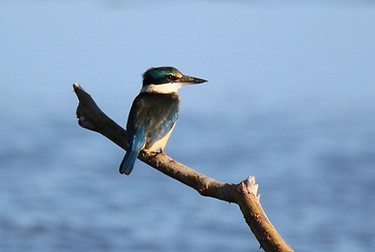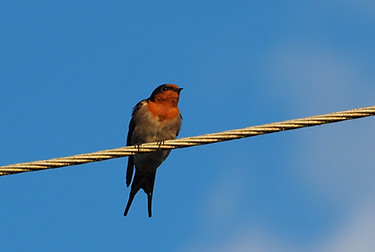top of page

There's plenty to see and do at the estuary.
The estuary walkway provides beautiful views, and there are signs along the way providing information about some of the birds you might see.
There is a lot of interesting wildlife at the estuary. As well as birds, the estuary is also home to some interesting plants and is an important habitat for native fish.
The Manawatū Estuary Trust enjoys giving people the opportunity to learn more about this amazing environ

Birds
Shorebirds are some of the special birds found at the estuary. These are wading birds, most of whom live in wetland or coastal areas. Shorebirds usually feed by picking invertebrates or molluscs out of the substrate of rivers, lakes, or coasts which usually involves some wading, hence their alternative name of waders.
The sandspit at Foxton Beach is the best place to view shorebirds and this is easily done at high tide from the viewing platform on Dawick Street. At this time birds are mostly resting and are easy to observe and you may even be lucky enough to spot something out of the ordinary. When the tide is lower, birds can be seen feeding on the extensive mudflats.
Some species are exclusively estuarine (feeding only on the estuary mudflats) but some species can also be seen all along the Manawatū River. Many of the estuary shorebirds are migratory arriving in good numbers for our summer while some Aotearoa New Zealand birds, like the Wrybill winter in the estuary and then fly to the South Island to breed in our summer. Long distance travelers, such as the Bar-tailed Godwits are our renowned summer visitors, before returning to the Arctic for the northern summer to breed. As well as waders, seabirds and wetland birds are present at the estuary.
A national wader count is carried out twice a year to monitor long-term trends in the wader population at sites throughout Aotearoa New Zealand. Click here to find out more about the wader counts on a national scale. Thanks to Birds NZ, a breakdown for those species recorded in the estuary is available here. Please bear in mind this is a snapshot on any one given day. More detailed information is given below under the 6 eBird estuary locations.
A checklist of species recorded from the area is included here. Information is basic and continually up-dated with links given by the usual method to a wealth of additional information. Headings and columns A and B are locked, so are always visible. This checklist follows a recognised international format and may not follow any that are used in Aotearoa New Zealand. Web address links are edited to fit within the static species columns. List can be downloaded and additions for personal use be "save as". These will not be saved to web.
Sightings of banded/flagged birds at the Estuary
When bird-watching from the viewing platform on Dawick Street, coloured leg bands/rings may be seen on some birds. These have been applied through research projects, not only in Aotearoa New Zealand but also overseas. These can take the form of either plain colours, inscribed with numbers/letters or flags. Details are entered into a database which can, over time help build up a picture of some of their movements. Details on how to report these are explained in more detail on the research page here
A few examples are given here for birds seen at the estuary. This is only a snapshot of what has been recorded with Department of Conservation database holding extensive data sets. Complete details include age, sex and other records are held there but those included via this link give only brief details of the species recorded so far - Bar-tailed Godwits, Lesser Knot, Caspian Tern, Fairy Tern and Shore Plover. Top and side columns are locked so details are scrollable.


There are 6 bird recording hotspots within Foxton Beach recorded on eBird and these are given below. Click on each link to view sighting in more detail, scrolling through the options as required.

1
2
3
5
6
4
1 Foxton Beach - Outer Coast
2 Foxton Beach (general)
3 Bollards, Manawatū Estuary
4 Dawick Street Viewing Platform
5 Foxton Beach Boardwalk
6 Manawatū Estuary near Boat Ramp
eBird
Some of the birds you might see are shown below. Click on the images to learn more about these special species. Each has a link at the end of some brief text to a more detailed account.
Many thanks to Terry Oliver-Ward for providing these beautiful photographs
Ngutu pare/Wrybill
Kuaka/Bar-tailed Godwit
Mātātā/Fernbird
Kuriri/Pacific Golden Plover
Kōtare/Sacred Kingfisher
Pohowera/Banded Dotteral
Taranui/Caspian Tern
Tara/White-fronted Tern
Tarāpuka/Black-billed Gull
Tarāpunga/Red-billed Gull
Karoro/Southern Black-backed Gull
Kakīānau/Black Swan
Tētē-moroiti/Grey Teal
Kuruwhengi/Australasian Shoveler
Rakiraki/Mallard
Kuiki/Canada Goose
Pūkeko/Australasian Swamp Hen
Tūturiwhatu/Spur-winged Plover
Warou/Welcome Swallow
Kōtuku/White Heron
Kōtuku ngutupapa/Royal Spoonbill
Kawaupaka/Little Pied Shag
Matuku hūrepo/Australasian Bittern
Matuku moana/White-faced Heron
Photo by Imogen Warren
bottom of page























